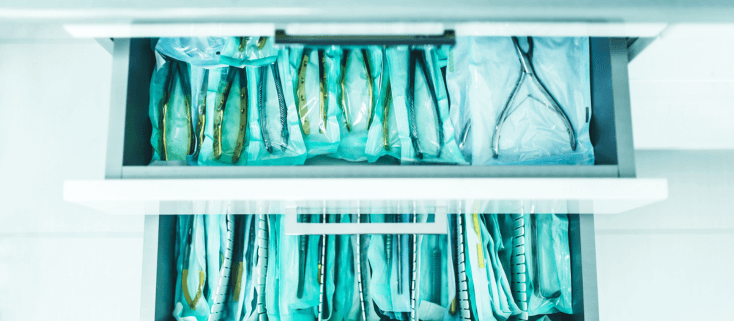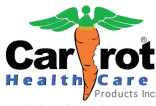
Table of Contents
Get Dental Catalogue PDF On Your Email
Efficient Instrument Management Solutions for Canadian Dental Practices
Keeping your dental practice running smoothly requires organization in every aspect, and that includes your dental instruments! These specialized tools are essential for providing best care to your patients. But managing them properly can be a challenge. Lost instruments, wasted time searching, and inefficient cleaning procedures can all disrupt your workflow.
This blog post from Carrot Health Care Products (Carrothcp) simplifies instrument management solutions specifically designed for Canadian dental practices. We’ll discuss the challenges, share best practices, and introduce technology tools that can make your instrument management process easy.
The Challenges of Instrument Management in Canadian Dental Practices
Canadian dental practices face unique challenges when it comes to instrument management. Here are some of the most common:
Limited Space: Many dental practices operate in compact spaces, making it difficult to find dedicated storage for a vast array of instruments, including instrument cassettes, which can house various tools.
Time Constraints: Busy schedules leave little room for time-consuming tasks like instrument cleaning, organization, and replacing consumable items like replacement silicon rubber for polishing tools.
Staff Turnover: New staff members may not be familiar with instrument location, proper handling procedures, or identifying the need for replacement parts like air/water syringe clips.
Inventory Control: Keeping track of instrument quantities, ensuring they are sterilized and readily available, and managing the stock of replacement parts like silicon rubber tips can be a headache.
Compliance with Regulations: The Canadian Dental Association (CDA) outlines strict guidelines for instrument sterilization and hygiene. Maintaining compliance can be complex.
These challenges can lead to wasted time searching for instruments, potential delays in treatment, and even the risk of non-compliance with sterilization protocols.
Best Practices for Instrument Management
The good news is that there are a number of strategies you can implement to improve your instrument management system:
Standardized Organization: Implement a clear system for organizing instruments. This could involve designated drawers, labeled cabinets, or color-coding systems for instrument cassettes. Consistency is key for staff to easily locate the instruments they need.
Instrument Tracking System: Consider using a physical tracking system like barcodes on instruments and cassettes, or a digital inventory management software to monitor instrument usage and ensure all required tools are readily available. You can see a number af tools at our dental catalogue book.
Cleaning and Sterilization Protocols: Establish clear protocols for instrument cleaning, disinfection, and sterilization in accordance with CDA guidelines. Regularly train staff on proper procedures to ensure patient safety. This includes proper care and replacement of consumable parts like silicon rubber tips.
Designated Cleaning Area: Equip a dedicated space for cleaning and sterilizing instruments, ensuring a clean and organized environment. This space should have designated areas for instruments awaiting cleaning, those undergoing cleaning, and sterilized instruments stored in cassettes or other appropriate containers.
Regular Inventory Checks: Conduct regular audits of your instrument inventory to identify any missing or damaged tools, cassettes, or replacement parts like silicon rubber tips. This allows for timely replacements and prevents disruptions during procedures.
Technology Tools for Making Dental Instrument Management Easier
Technology can be a powerful in making instrument management process so easy. Here are some solutions to consider:
Dental Practice Management Software (DPMS): Many DPMS systems integrate instrument tracking features. You can record instrument usage, sterilization cycles, and expiration dates of single-use items, all within your existing software. This can also help with managing stock levels of replacement parts like silicon rubber
Instrument Tracking Tags: Radio Frequency Identification (RFID) tags or barcode labels attached to instruments and cassettes can be scanned to track their location and usage in real-time. This eliminates wasted time searching for missing tools and ensures proper inventory management.
Automated Sterilization Systems: Automated washer-disinfectors and autoclaves can significantly reduce manual cleaning time while ensuring proper disinfection and sterilization according to CDA guidelines.
By incorporating these best practices and technology solutions, Canadian dental practices can achieve a more efficient and organized instrument management system. This translates to:
- Reduced wasted time spent searching for instruments.
- Improved staff productivity.
- Enhanced patient safety through proper sterilization procedures.
- Increased cost savings by optimizing instrument replacement schedules and managing consumable parts.
Additional Tips for Canadian Dental Practices
Here are some additional tips specific to Canadian dental practices:
Stay Updated on CDA Regulations: Familiarize yourself with the latest guidelines from the Canadian Dental Association (CDA) regarding instrument sterilization and hygiene protocols, including the proper use and replacement of consumable parts.
Invest in High-Quality Instruments: Durable, well-maintained instruments last longer and require less frequent replacement, saving you money in the long run. You can find a wide variety of high-quality instruments, cassettes, and replacement parts like silicon rubber at Carrot Health Care Products instrument management section.
Consider Outsourcing Sterilization: For some practices, outsourcing instrument sterilization to a specialized facility can be a cost-effective solution.

